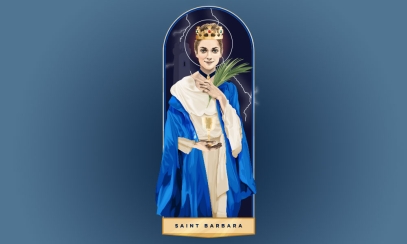
St. Margaret Brought Scotland to a New Level
Scotland in the 11th century was a wild and untamed country. Scottish lords fought each other and the English for control of the government. Even the Church, far from Roman control, developed its own – sometimes unorthodox – way of doing things. It would take a person strong in the ways of secular leadership and religious faith to bring the country to a new level. In St. Margaret, Scotland found both.
St. Margaret was not Scottish, but Saxon. Her father, Edward Atheling, had been heir to the throne of England, but a Danish invasion sent him fleeing to Hungary, which was known for taking in royal exiles. There, Edward met and married Agatha, a German princess. Their daughter, Margaret, was born in Hungary in 1045, and was raised to be both a good princess and a devout Christian.
Edward and his family returned to England so that Edward could become heir to his uncle, King (and Saint) Edward the Confessor. But he died before ever meeting his uncle. The Norman Conquest of England by William the Conqueror in 1066 meant that the Saxons no longer ruled England, and Edward’s widow and children had to seek refuge once again. They ended up in Scotland where King Malcolm took them in and began courting young Margaret. Even though she had intended to become a nun, she realized that she could do a lot of good as Queen of Scotland, and finally agreed to marry the king.
As queen, Margaret built schools and churches, established abbeys, cared for the poor, and invited the Benedictine monks to set up monasteries in Scotland. She encouraged Scottish clergy to bring the practices of the Scottish Church into line with Rome, restoring the rules for Lenten fasting and Easter Communion, ensuring that the Mass followed the proper rituals, and abolishing liturgical abuses. Margaret visited the sick, built hostels for the poor, and held feasts at the castle for commoners. Statues of St. Margaret often show her with coins in her outstretched hand, ready to give to the poor.
Margaret was also busy working her influence on the Scottish royal court. She introduced continental fashions, manners, and ceremony. She also introduced foreign merchants to Scotland, and increased economic ties and trade between Scotland and the rest of Europe. She and other English exiles offered advice to King Malcolm and helped to introduce English-style feudalism and parliament to Scotland.
Margaret died Nov. 16, 1093, four days after learning of the deaths of her husband, King Malcolm, and their oldest son, Edward, in battle. She was canonized a saint in 1250 and was named patroness of Scotland in 1673.



